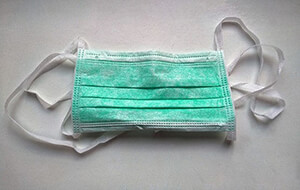 Please note, this is not direct advice from The Wealth Conservancy, instead a relay of information from the CDC. In the past week, the CDC released a report that shows two masks are indeed better than one. However, there is proper mask etiquette in the way you should double up on your face masks.
Please note, this is not direct advice from The Wealth Conservancy, instead a relay of information from the CDC. In the past week, the CDC released a report that shows two masks are indeed better than one. However, there is proper mask etiquette in the way you should double up on your face masks.
Wired has released an article that includes the following: “The US Centers for Disease Control and Prevention released findings that double-masking—wearing one face mask on top of the other—can be an effective way to reduce the transmission of the coronavirus that causes Covid-19. It’s a practice experts have been mulling over for a while now, with President Biden’s chief medical adviser Anthony Fauci advocating for double-masking back in January. Now the CDC’s lab tests show that double masks can reduce the likelihood of coronavirus transmission between two people by up to 95 percent if both parties wear them correctly.”
What this means is that there is only a 5% chance that two parties each wearing double masks in an enclosed space could spread the virus. UC Davis found that when one person wears a mask, their risk of infection decreased by 65%. We know that as of January 23rd, about 83% of Americans support wearing masks, but only half of them do so. Less than 47% reported wearing their masks when gathering with 10 or more people.
As you may know, masks are now required on federal premises and public transportation, no exceptions. This as new, more-contagious coronavirus mutations are beginning to appear throughout the world. With this news, there’s no better time to understand how you can effectively double mask in vulnerable situations to protect yourself. You may be wondering if there are financial incentives to wearing masks? Perhaps. As CBS news reported, “everyone wearing face masks could save America from a $1 trillion GDP loss.”
So, what is double masking? It is simply the act of wearing one mask over the other to add extra protection, blocking particles by creating a tighter seal around your face. The best way to achieve this is by wearing a surgical mask as your primary mask, creating the tightest seal around your face – and then adding a cloth mask over that. The cloth mask may fit looser, which allows for better breathability while adding an extra layer of protection over the surgical mask. It’s important to remember that N95 masks are believed to filter out at least 95% of very small particles, so they are considered the safest of the surgical masks.
If you’re wearing a surgical mask with a filter, it’s best to make sure this filter is covering your nose and mouth properly. It’s not helpful if it’s too small or too loose. Also, it’s important to remember that filters should be replaced if they become too damp or wet, as the effectiveness of the mask could be impacted.
Odds are you have seen the blue surgical masks that are widely available and popular. These are great primary masks as they filter out aerosols of all sizes. However, they do not fit snuggly on most faces. Double masking over these blue surgical masks can be effective in covering the gaps in these looser masks.
So, how do you know if the mask you have is a good fit? The WSJ gives this advice: “When you breathe in, the mask should press in or flex into your face with the air flow. You can also breathe out. There should be no gaps with air coming out of the sides of your mask. If your glasses fog up, that means air is escaping around the top of your mask by the nose bridge.”